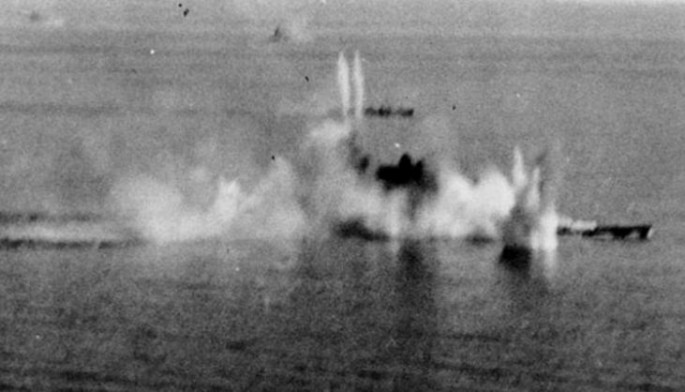The sunken wreck of one of the two largest battleships ever built, the Musashi, of the Imperial Japanese Navy has been finally discovered off the coast of central Philippines by a team led by Microsoft co-founder and billionaire Paul Allen.
An amateur historian with a deep interest in World War II, Allen said his superyacht, the MY Octopus, found the wreck of the Musashi at a depth of around one kilometer (3,281 feet) in the Sibuyan Sea where she was sunk on October 24, 1944 after being attacked by hundreds of U.S. Navy planes. Large chunks of the wreck littered the sea floor.
The discovery of the Musashi marks a successful end to Allen's hunt for the battleship that lasted over eight years, according to CNN.
Allen commissioned a hypsometric bathymetric survey of the ocean floor to determine the terrain before searching the area with a Bluefin autonomous underwater vehicle. A statement released by Vulcan, Allen's company, said the team combined historical data with advanced technology to narrow the search area.
"The Musashi is truly an engineering marvel and, as an engineer at heart, I have a deep appreciation for the technology and effort that went into its construction. I am honored to play a part in finding this key vessel in naval history and honoring the memory of the incredible bravery of the men who served aboard her," said Allen.
Allen used his Twitter account to announce the historic find. One of his tweets showed an image showed the bow of the Musashi emblazoned with a massive chrysanthemum, the flower that is the emblem of Japan's imperial family.
"Since my youth, I have been fascinated with World War II history, inspired by my father's service in the U.S. Army," Allen said.
Kazushige Todaka, director of Japan's Kure Maritime Museum, said that, given the location and the depth at which the wreck was found, he was "90% sure" the ship is the Musashi.
Launched in 19040, the Musashi was one of two Yamato-class battleships, which were the largest class of warship ever built. The other battleship was the Yamato.
Launched in November 1940, Musashi carried the largest caliber guns ever mounted on a warship: nine 46 cm (18.1 inch) cannon mounted in three triple turrets. Each gun was capable of firing up to two 1,460 kg (3,220 lb.) armor-piercing shells a minute to a maximum range of 26 miles, said The Guardian.
She carried a crew of 2,500 and could travel at speeds of up to 27 knots (50 km/h).
The Musashi was sunk on October 24, 1944, during the Battle of the Sibuyan Sea, part of the Battle of Leyte Gulf, the greatest naval battle in world history that ended in the decisive defeat and destruction of the Imperial Japanese Navy.
Torpedo planes from U.S. aircraft carriers of Task Force 38 scored at least 10 torpedo hits on the battleship over the course of four hours. It were the torpedo hits that doomed the Musashi. Navy dive bombers hit Musashi 16 times.
Musashi went down by the bow and capsized, taking over 1,000 of her crew with her, including her captain.




























